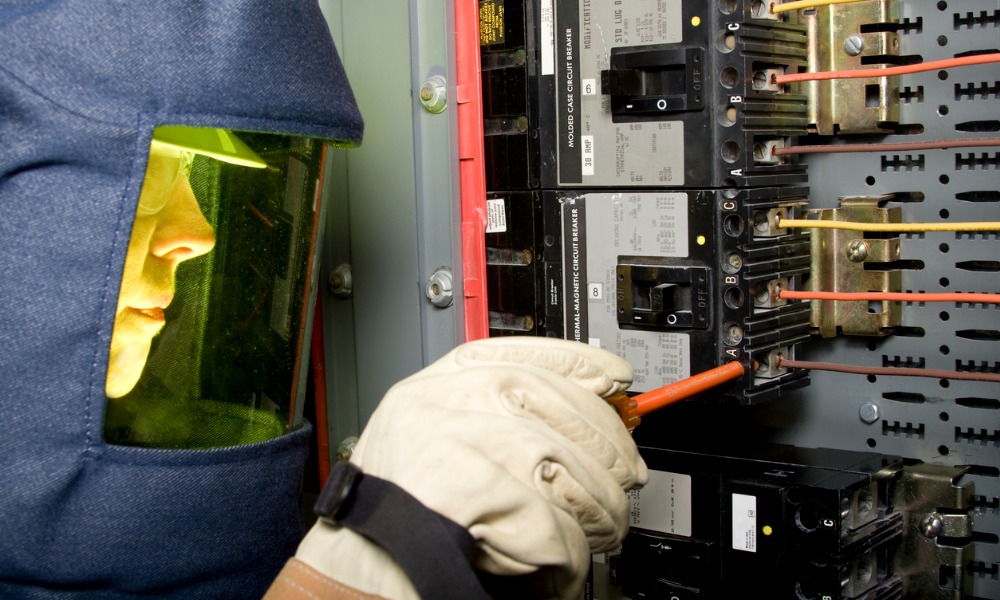A guide to making informed safety decisions when it comes to electrical attire


Electrical work is prominent in many industries, from construction to manufacturing to IT. Its presence can assist in automation and ease pressures on the workforce. However, several dangers are also associated with the nature of electrical systems. Recognize the what, why and how of PPE selection.
What PPE selection for electrical work entails
PPE — or personal protective equipment — is special gear for handling the dangers of electrical work. Specialists could know everything there is to know about electrical systems and still become vulnerable to them. The stakes are even higher for people new to electrical work, so it’s essential to have the proper PPE available.
Occupational health and safety standards under the Canadian Electrical Code require safety gear for generating, distributing, and using electricity. You can also refer to the Canadian Center for Occupational Health and Safety to understand the federal legislation for professionals working with electrical equipment.
Why PPE selection for electrical work is Important
Proper PPE selection is meant to save lives and prevent injuries. In Ontario, about 53 electrical-related fatalities occurred between 2012 and 2021. There are also risks of electrocutions and burns when crews work without protective gear and tools.
Aside from electrical work’s impact on staff, it can also influence infrastructure and other forms of equipment. Electrical fires can cause significant property damage that take businesses months or even years to recover.
How to choose electrical PPE
Electrical work PPE varies in different forms, from head and body protection to visual and hearing protection. Discern these items through the PPE selection process.
Hazard assessment
Some people believe hard hats are enough PPE for electrical work, but it’s essential to be more meticulous. Assess the electrical hazards involved in your projects and determine the voltage levels to discern the level of protection necessary.
If the processes have an increased risk of arc flashes, safety glasses and face shields are imperative. Arc flash suits with increased thermal and flame resistance are also ideal.
When working on a construction project, be wary of the electrical noises on the site. Protect workers’ hearing with earplugs and seek out industrial ear muffs for higher decibels.
PPE testing
Some electrical PPE suppliers may claim to provide gear without following the specifications required by law. For example, safety shoes require non-conductive material to insulate electrical shocks and currents. Pay attention to these details, and look for materials that have been tested and certified for their quality.
PPE training
Another factor in PPE selection is training. Workers only intervene 39% of the time when they see an unsafe situation, meaning most concerns go unspoken. Stay ahead by addressing fears and educating employees about the PPE requirements for their electrical work. You should also make sure the gear fits workers for optimal protection.
Other considerations for electrical PPE
Once the PPE selection is complete, there are several considerations to make when managing this gear. Taking care of these items entails higher quality protection in the long run.
Maintenance
PPE can withstand various electrical hazards, but this doesn’t mean it’s indestructible or contamination-free. Check the manufacturer's label for cleaning and equipment-quality maintenance instructions. If electrical or insulated components exist, take extra precautions and follow procedures.
Inspection
Look at the PPE closely during maintenance sessions. Visual inspections can help professionals spot corrosion, enclosures and other damage to the components. If repair isn’t an option because the item is tattered or unfit for use, dispose of it responsibly and seek replacement PPE.
Storage
Store electrical PPE in a clean and dry location to keep its quality intact. Before and after operations, put the equipment in a safe space away from sunlight. Avoid mixing up different workers’ sets of gear.
Finding good PPE for electrical work
PPE selection is an essential practice for electrical work. Above all else, it’s important to do it well. Be discerning as you pick out protective gear — the right choice can save an employee’s life.





